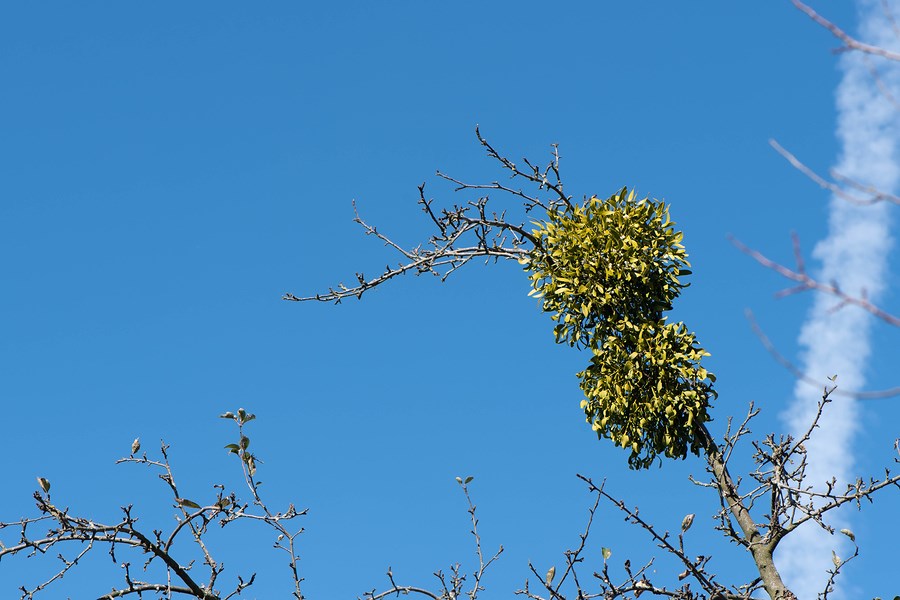The mistletoe associated with Christmas does not grow in Canada, but its more destructive relatives are widespread, infecting evergreens. The Eastern dwarf mistletoe (Arceuthobium pusillum) infects white spruce, black spruce and tamarack, while the lodgepole pine dwarf mistletoe, Arceuthobium americanum infects primarily lodgepole pine and our local jack pine. It infects other species of pine occasionally.
Dwarf mistletoe, like other mistletoes, is a perennial parasite. It derives water and most of its nutrients from the infected, or host, tree, through an extensive root system under the bark. Short, greenish shoots form the visible part of the plant. The shoots are from less than two centimetres to about six centimetres long, depending on species. Because the plant also has chlorophyll it is actually a hemiparasite.
The leaves are tiny and scale-like, and flowers are produced in spring on separate male and female plants. The male plants produce pollen which is carried to the female plant’s flowers by the wind. The female plants produce berries, each containing only one seed.
The parasite spreads through the forest slowly. The seeds are dispersed in the following fall, taking more than a year to mature. The seeds are forcefully ejected to travel as far as 18 metres. Seeds can also be spread by birds. The seed is covered with a sticky substance which allows it to stick to bark and needles throughout the winter. Spring rains dissolve the sticky substance, allowing seeds that have landed on needles to slide down the needle to the stem. The seeds germinate, sending out a root-like structure to penetrate the bark and grow a root system. It takes three to five years for shoots (tiny branches) to appear, at which time the infection becomes apparent by the appearance of witches’ brooms. Witches’ brooms are dense clumps of branches.
Dwarf mistletoe is widespread in the boreal forest in Manitoba and Saskatchewan. Travelling to Saskatoon, I notice areas of pine forest with a few witches’ brooms, and stretches of pines where almost every tree has one to many. Affected trees decline and eventually die. Trees of any age can be affected, and young trees die more rapidly than older trees.
Forest fires are the parasite’s natural enemy. With suppression of forest fires dwarf mistletoe infection has increased. Clear cutting can control dwarf mistletoe infection only if all sizes of infected and potential host trees are removed, and a buffer zone of deciduous trees is kept clear of host trees. In lightly infected recreational areas and residential areas thinning and pruning are effective control measures.
Next time you travel along the highways when you notice witches’ brooms, you will know that dwarf mistletoe is present.




